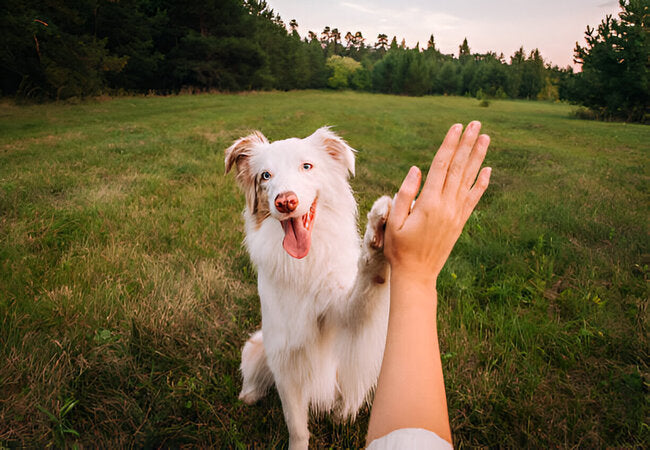2025 Vet Insight: How to Read Dog Body Language—Vet‑Approved Guide 🐶🧠

In this article
2025 Vet Insight: How to Read Dog Body Language—Vet‑Backed Guide 🐶🧠
By Dr. Duncan Houston BVSc
Hello, I’m Dr Duncan Houston BVSc, veterinarian and founder of Ask A Vet. Dogs speak volumes without words—through tails, ears, posture, eyes, and more. In this 2025 insight, you'll learn to decode their signals—identifying stress, joy, fear, or confidence—to respond with empathy, deepen your bond, and prevent problems before they arise.
1. Why Body Language Matters
Every wag, posture shift, or glance is intentional. Weiss et al. stress that reading these cues properly is crucial for safe, respectful relationships—with benefits in trust, welfare, and wellbeing.
2. Core Communication Channels
Dogs rely on several nonverbal channels:
- Tail movement & position: High = confidence or arousal; tucked = fear/submission; wag speed & direction reveal joy vs anxiety.
- Ear placement: Forward = alert; flat = fear/submission; flickering = uncertainty.
- Eyes & gaze: Soft and blinking = calm; hard stare = threat. Avoidance signals submission or de-escalation.
- Facial expressions: Relaxed open mouth = happy; lip lifts = warning; yawns and nose licks = calming signals.
- Posture & movement: Loose and wiggly = play; stiff = tension/aggression; cowering = fear.
3. Tail Signals in Depth
Tails tell a rich story. High and fast wagging with broad strokes = friendly excitement; slow, half‑mast wag = uncertainty; tucked = anxiety. Direction matters—right-biased wag = positivity, left-biased = caution.
4. Eyes, Ears & Facial Cues
- Eyes: “Soft” with relaxed lids = calm; dilated pupils and hard stare = threat.
- Ears: Upright = alert; backward = fear or stress; head-tilt = curiosity or focus.
- Mouth: Open pant = relaxed; closed or lip-licking = tension; snarling lips = aggression; yawning = stress relief.
5. Posture & Movement Patterns
Whole-body signals offer clarity: loose/playful = safe; stiff/stalk = threat; crouching or cowering = fear; play bow = invitation to join.
6. Calming & Pacifying Signals
Dog’s toolkit to ease tension includes yawning, lip-licking, turning away, paw-lifts. These are often misunderstood—but they’re vital for preventing escalation.
7. Dogs Don’t Send Isolated Signals
Body language works in context. AKC observes that signals need to be interpreted as a package—tail wagging can mean stress or joy depending on posture, ears, eyes.
8. Why Accurate Reading Matters
Accurate interpretation fosters empathy and prevents bites or miscommunication. Studies have shown improved safety around dogs when people learn to decode stress signs early.
9. Practical Tips for Owners
- Observe in calm environments before reacting.
- Use video to slow down and interpret signals.
- Respect calming cues by slowing down or removing triggers.
- Teach kids and family to interpret signals for safety.
- Reinforce positive behavior—relaxed body posture? Praise + practice.
10. FAQs on Body Language ❓
- Q: My dog wags but looks stiff—what does that mean?
- A stiff body with wag may indicate tension or conflict, not friendliness.
- Q: Are calming signals always stress?
- Yes—lip licks, yawns, head-turns often mean the dog is trying to reduce tension.
- Q: Does staring always mean aggression?
- No—soft gaze can mean focus. A hard stare with stiff posture is the warning signal.
- Q: Can I train my dog using these cues?
- Absolutely—responding to calm behavior with praise and rewards reinforces trust and reduces misbehavior.
🔧 Ask A Vet Tools & Support 🛠️
- 📹 Send video clips of your dog’s signals for expert analysis.
- 🎓 Access guided training modules: body language, calming, trigger management.
- 🧠 Download calming signal posters and signal checklists.
- 📈 Track your dog’s emotional “state” over days and contexts.
🩺 Final Vet Reflection
Understanding canine signals is more than skill—it’s empathy in practice. By paying attention to tails, ears, eyes, facial expressions, posture, and calming cues—and responding kindly—you build a respectful, trusting relationship. This knowledge can prevent stress, fear, even bites, and foster a deeper bond. If you ever feel unsure about interpreting your dog, Ask A Vet is here to guide you toward confident, caring communication. 🐾❤️
— Dr Duncan Houston BVSc, Ask A Vet Founder






